
Explain the process of secondary growth in the stems of woody angiosperms with the help of schematic diagrams. What is its significance?
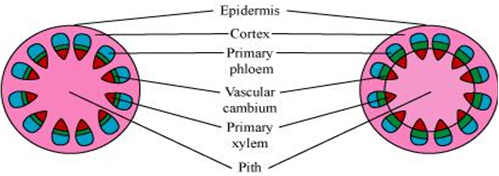
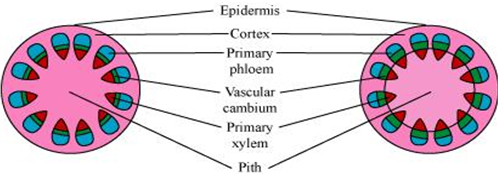
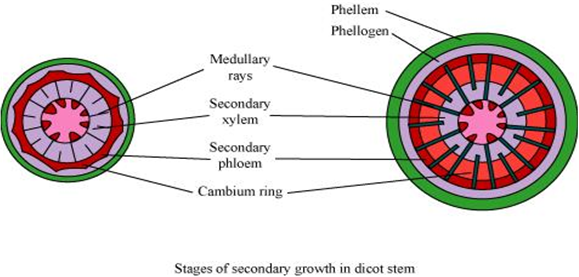
The secondary growth in plants:
i. Increases the girth of plants,
ii. Increases the amount of water and nutrients to support the growing number of leaves.
iii. Provides support to plants.
Cut a transverse section of young stem of a plant from your school garden and observe it under the microscope. How would you ascertain whether it is a monocot stem or a dicot stem? Give reasons.
We would ascertain whether the given stem is a monocot stem or dicot stem by looking at some characteristics which are unique as to the particular type.
The dicots stem is characterised by the following unique characters:
i. vascular bundles are arranged in a
ii. Each vascular bundle is conjoint, collateral, and open.
iii. Medullary rays are present between the vascular bundles.
iv. Pith is present.
If these characters are observed in the given stem, then it a dicot stem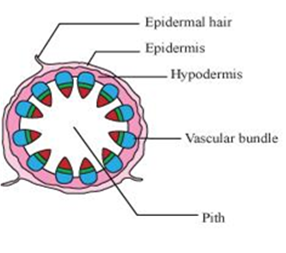
The monocot stem are characterised by the following unqiue characteristics:
1. Vascular bundles are scatttered.
2. Each vascular bundle is conjoint, collateral, and closed vascular bundles.
3. Medullary rays are absent. 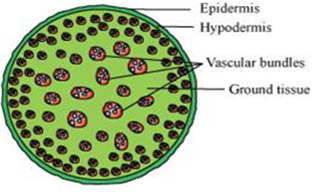
Draw illustrations to bring out anatomical difference between:
(a) Monocot root and dicot root
(b) Monocot stem and dicot stem
(a) Monocot root and dicot root: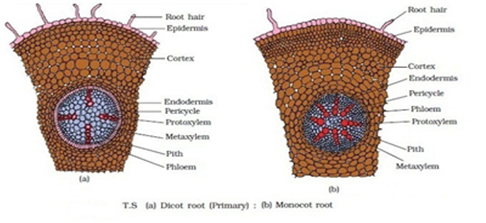
(b) Monocot stem and dicot stem: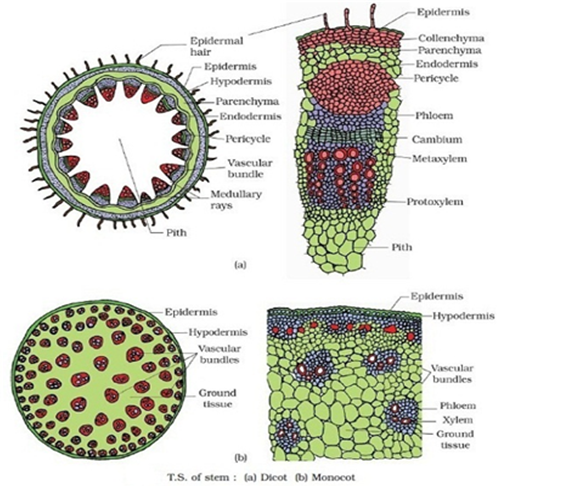
State the location and function of different types of meristems.
Meristems are specialised regions of active cell division in plants. The meristems represent the regions of growth. Growth is largely restricted to the meristem regions of the plant. Depending on their location the meristems are of three types.
(i) Apical meristem:
These meristems are present at the tips of the roots and shoots. The shoot apical meristem is present at the tip of the shoots and its active division results in the elongation of the stem and formation of new leaves. The root apical meristem helps in the elongation or growth of roots. They are primary meristems as they appear early in the plant life.
(ii) Intercalary meristem:
These are present between the masses of mature tissues present at the bases of the leaves of grasses. It helps in the regeneration of grasses after they have been grazed by herbivores. They are primary meristem.
(iii) Lateral meristem:
It appears in the mature tissues of roots and shoots. It is called the secondary meristem as it appears later in a plant's life. It helps in adding secondary tissues to the plant body and in increasing the girth of plants. Examples include fascicular cambium, inter-fascicular cambium, and cork cambium.
The transverse section of a plant material shows the following anatomical features:
(a) the vascular bundles are conjoint, scattered and surrounded by a sclerenchymatous bundle sheaths.
(b) phloem parenchyma is absent. What will you identify it as?
The scattered vascular bundles surrounded by sclerenchymatous bundle sheaths and the absence of the phloem parenchyma is unqiue to the monocot stem. Thus, the specimen is of a monocot stem.
